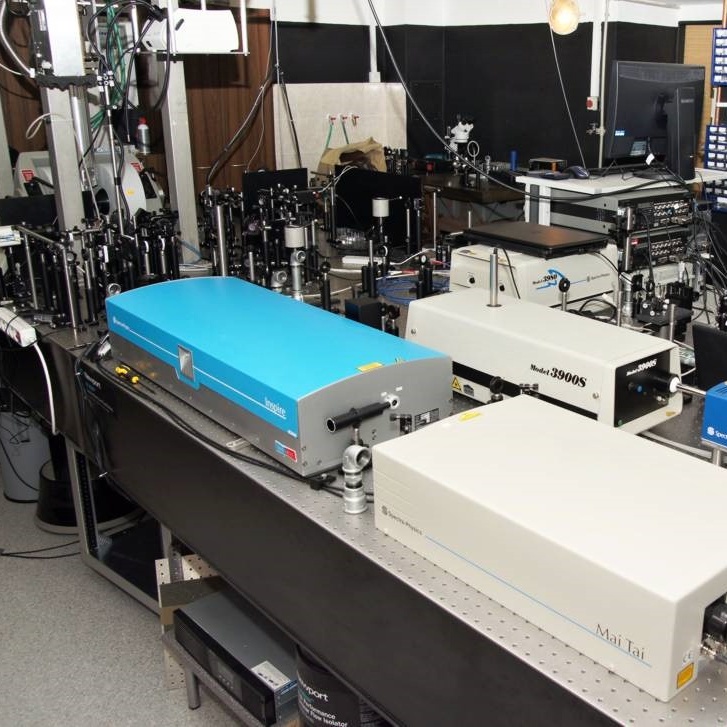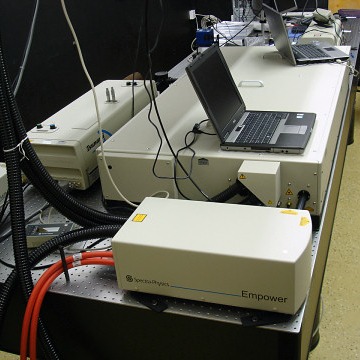 |
 |
 |
 |
 |
 |
 |
|
Laser LaboratoriesThe experimental equipment of our division is concentrated into these four laser laboratories: | |
 |
Laboratory of OptospintronicsLaboratory of Optospintronics (LOS) is a joint laboratory of Faculty of Mathematics and Physics, Charles University in Prague and Institute of Physics, Academy of Sciences CR. The Laboratory was established in 2011 as an output of an extensive collaboration between Division of Quantum Optics and Optoelectronics Faculty of Mathematics and Physics and Department of Spintronics and Nanoelectronics of the Institute of Physics. Starting from 2017, the research performed in LOS is partially supported by European research grant ASPIN awarded within the Future and Emerging Technologies program that is part of the Excellence pillar of the Framework Programme Horizon 2020. |
 |
Laser lab with ultrashort pulsesLab with ultrashort pulses is equipped with a femtosecond titanium-sapphire laser Tsunami (Spectra-Physics). This laser has pulses with a length of 70 fs and a pulse energy of about 20 nJ, is tunable in the range 700 - 1030 nm, after doubling the frequency in the 350 - 565 nm range. The 80 MHz repetition rate can be reduced by a pulse picker to 4 MHz or less. A Hamamatsu streak camera (picosecond time resolution), semiconductor detectors and photomultipliers, Andor CCD cameras with spectrometers are available for detection. In 2017, the laboratory was equipped with a unique laser system Rainbow (Spectra-Physics) with few-cycle pulses (< 7 fs). Thus, we have reached the physical boundaries of the time resolution in the visible spectrum. These ultrashort pulses can even be reduced to about 4.5 fs, which corresponds to just two oscillations of light. It is possible to study a whole new range of physical phenomena occurring in materials during a single optical cycle. In addition, the system includes a phase stabilization system for individual pulses (CEP). |
 |
High energy laser labThe laboratory is based on a high-performance femtosecond laser system consisting of a Tsunami titanium sapphire laser and a Spitfire regenerative amplifier (Spectra-Physics) providing 100 fs pulses with energy up to 3.5 mJ. The peak power of these pulses exceeds 35 GW, and after focusing extreme intensities of up to 10 22 W/m 2 can be achieved. Laser wavelength tuning is provided by a parametric TOPAS amplifier over a wide spectral range of 240 - 2400 nm. High power laser pulses allow us to study nonlinear processes in matter with high time resolution. |
 |
Magnetooptic lab... |
